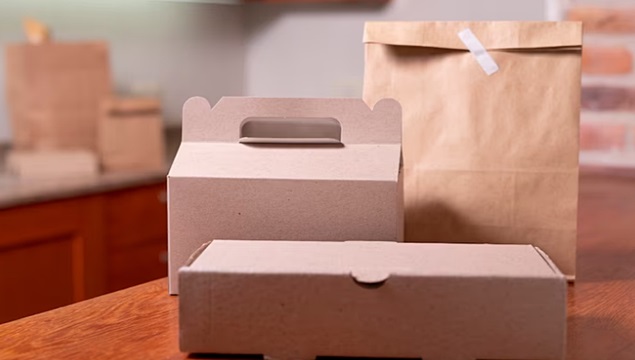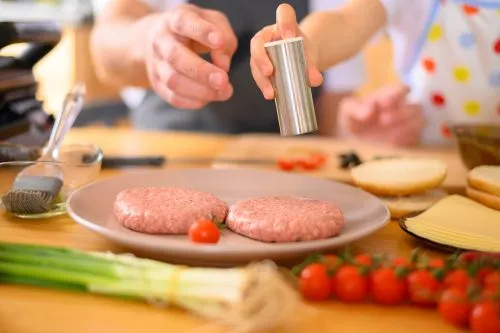
Within a growing urban population, food packaging is necessary for the transportation, storage, and consumption of food products. By 2050, the world's population is estimated to reach 9.7 billion, with two-thirds residing in urban areas, leading to increased food requirements and changes in food consumption patterns. People living in cities tend to have a busier lifestyle, spending less time shopping for or preparing food, preferring processed foods over fresh ones, and primarily buying from supermarkets or convenience stores to save time. Such patterns are evident today in high-income countries, although even in developing countries, small and traditional shops are being replaced by supermarkets, leading to larger supply chains that rely heavily on packaged foods. How will the packaging industry respond to these new demands? This question was addressed in a study titled "Sustainable and Bio-Based Food Packaging: A Review on Past and Current Design Innovations" conducted by a research team composed of Florencia Versino, Florencia Ortega, Yuliana Monroy, Sandra Rivero, Olivia Valeria López, and María Alejandra García from the Polytechnic University of Madrid.
The Key Role of Design
Considering that over 80% of a product's environmental impact is determined during the design stage, design plays a crucial role in its sustainability. In food packaging, efficient design can enhance the durability of the food product by minimizing food waste and facilitating packaging recycling at the end of its life cycle.
However, food preservation represents a larger portion of the overall environmental impact of a packaged food product. On average, packaging is estimated to account for only 10% of the energy consumption required for a single person's weekly food consumption and can ensure that 90% of the food is not wasted throughout the supply chain.
The relative environmental impact that packaging has on a food product depends primarily on the type of food, particularly its perishability, cost, and overall emissions and resource depletion in production. For example, greenhouse gas emissions from dairy and meat products are higher than those from fruits and vegetables by 13-18%, far exceeding the emissions from packaging manufacturing and end-of-life.
Therefore, the focus should be on minimizing food waste for animal-based food products, which would bring greater benefits to the system, while efforts should be directed toward reducing the impact of packaging for fruits and vegetables.
Life cycle assessment (LCA) of both the food product and the preferred packaging system should be performed in each case for better decision-making, considering the available reality of waste management systems and possible optimized alternatives. Consequently, besides product protection, designing the most efficient and sustainable packaging is a complex process involving numerous sectors throughout the supply chain, including the target market.
Impact on the Environment
To minimize the environmental impact of the packaging system, it is important to consider its capacity to contain, protect, and preserve the product to extend its shelf life and ensure food safety. However, it should also be appropriately sized, easy to open and empty, and provide clear and accessible information to prevent food waste.
Furthermore, packaging materials should meet the desired barrier and mechanical properties while remaining as lightweight as possible and safe for food. Ideally, they should be reusable or recyclable and disposed of with minimal to zero pollution. Several research efforts have focused on improving the barrier properties of materials for sustainable food packaging.
Most design decisions aim at reducing packaging and food waste, all of which indirectly have an economic impact. A significant portion of household food waste may be due to packaging that does not meet consumers' needs, such as packaging that is too large or difficult to empty.
For example, packaging that is easy to empty reduces both product waste and unit cost, and facilitates easier cleaning for better recyclability of the packaging material, thereby reducing water usage in this regard.
In this regard, a new biobased, sustainable, and superhydrophobic material has been introduced for packaging applications. Additional packaging attributes that can influence food waste include resealability, easy opening, gripping, portioning or dispensing, and communication of food safety/freshness information.
Materials with Barrier Properties
Materials with barrier properties have been extensively studied to reduce food perishability. Depending on the characteristics of the food matrix, the diffusion or transmission of various substances such as oxygen, carbon dioxide, ethylene, nitrogen, water vapor, volatile molecules, microorganisms, light, or heat need to be controlled to avoid undesired chemical and physical reactions in the food product that could lead to unpleasant odors or flavors, or even spoilage.
Multilayer packaging systems have the potential to simultaneously provide barrier properties against multiple undesired or hazardous compounds or to provide the necessary mechanical or thermal resistance to the barrier materials and vice versa. Currently, multilayer packaging is widely used in food and beverage products, such as juice and milk cartons, typically consisting of 75% cardboard, 20% plastic (mostly PE), and 5% aluminum foil.
Despite their potential to extend the shelf life of food, they largely involve less material to achieve the same functionality as monomaterials, but their recyclability is quite challenging.
Palombini et al. studied the sustainability of packaging used for organic food, showing that the most dominant characteristics of non-recyclable or poorly recyclable polymer-based packaging were metallization and the use of opaque materials, polymer blends, the presence of adhesives for labeling, multilayer packaging, and printed labeling over packaging.
Better sorting of multilayer packaging waste would be necessary for high-quality recycled materials, although they are currently found in various recycling streams, hindering their recyclability. Kiaser et al. clearly presented two main technologies available for recycling multilayer packaging: compatibilization methods (for polymer-based packaging) and component separation through dissolution-reprecipitation or delamination techniques for the independent recycling of each component, where possible.
The major limitations of these methods are as follows:
- Compatibilization does not seem feasible for post-consumer packaging due to fluctuations in composition and the need for more stringent labeling and waste sorting;
- Although the dissolution-reprecipitation method may become available for recycling in the near future, it is a highly energy-demanding process;
- Systematic delamination could be a more environmentally and economically sustainable solution if proper separation and sorting of delaminated layers are possible.
In this regard, further investigation into optimizing the recycling of multilayer packaging is absolutely necessary. Alternatively, fully biodegradable multilayer packaging systems are being designed to be compostable at the end of their life span. This could potentially reduce food waste and, at the same time, avoid recycling issues while reducing environmental impact.
The new materials
However, more research is needed considering that a significant portion of discarded packaging is labeled as compostable or biodegradable. Misdirection occurs either because these materials are discarded without proper classification or they don't enter urban waste treatment streams at all, or non-biodegradable plastic packaging is rejected from recycling facilities due to the lack of available processing technologies or the volume deficit required for efficient cost-effective recycling.
Additionally, new composite or nanocomposite materials have been studied to improve the barrier properties of materials intended for food packaging. A focus on more durable, fully bio-based, and biodegradable materials, particularly using by-products and waste from the agri-food industry, is widely reported in the literature review.
For example, Báscón-Villegas et al. recently published a paper on the composite of PLA and polybutylene adipate-co-terephthalate (PBAT) with nanofibers obtained from wheat straw. Similarly, Silva dos Santos et al. formulated chitosan, palmitic acid, and activated carbon-based coating for cardboard packaging, which provides increased barrier against fat and moisture for paper-based packaging while maintaining biodegradability and recyclability.
Additionally, many new active properties can be conferred to packaging to extend the shelf life of food. For example, Manfredi et al. emphasized that waste savings in the fresh milk supply chain can be achieved by applying a spray antimicrobial on standard multilayer cardboard packaging, which outweigh the impact generated by the coating production.
In turn, active packaging contains compounds that can preserve the organoleptic or sensory characteristics to ensure the quality of the food product. Of particular interest are active packaging materials containing natural antioxidants and antimicrobials that not only extend the shelf life of packaged products by preventing rancidity reactions but also prevent the growth of foodborne pathogens.
Biobased nanocomposites have been studied for innovation in sensors for better detection of food degradation with markers, thereby reducing food losses. In this regard, active and intelligent packaging receives great interest, although they are still under research and not widely commercialized.
Development of recycling
The development of advanced recycling and remanufacturing methods should be considered in the design of new circular and sustainable systems. Some key related aspects include recyclable and non-hazardous materials, efficient logistics and transport systems, energy and resource efficient technologies, and product design aimed at recyclability, remanufacturability and reuse.
Even though the aim of reuse and recycling is implied in the circular economy model, this is poorly realized for food packaging, as it is difficult to guarantee the quality and safety of food contact materials in the available waste management systems. Currently, reuse is only viable for refillables and containers that can be cleaned (eg bottles, stainless steel containers).
In the long term, the chemical safety of recycled food packaging could be achieved by replacing unsafe substances in material design, avoiding their entry into the recycling stream. However, a period of 10–30 years is estimated for a significant reduction in contaminant levels.
In the short term, clear labeling of packaging materials, consumer education to identify more sustainable packaging alternatives and more efficient safety and sorting systems within waste management and recycling systems could contribute to a more sustainable use of packaging food.
In addition, sustainable recycling systems must be cost-effective in terms of the recycling technology selected, the material quality of the recycled products (depending on the type and conditions of secondary raw materials collected from the waste stream), availability (in terms of economies of scale) and the cost of collection and sorting.
Economic and environmental benefits
Facilitating recyclability has not only environmental and economic benefits, but also a social contribution, given that sorting and selling dry waste is a source of income for low-income workers in some countries. In addition, packaging design can significantly affect logistics in transport, handling and storage throughout the supply chain.
Such decisions have direct implications for distribution times and product shelf life. However, the best packaging systems depend on the frequency of reuse, transport routes and distances, and end-of-life treatment.
In terms of resource reduction, water and energy saving technologies, revalorization of by-products and bio-waste are realized through the development of new bio-based packaging materials and new thermal insulation materials, which can help reduce energy in the preservation of heat-sensitive foods , as well as reducing their alteration rate.
The role of composting
To reduce the environmental impact of biodegradable and compostable bioplastics, the preferred route of disposal and treatment is composting. However, most materials currently reported as compostable (according to current legislation), require specific composting conditions (thermophilic: 58 C), to be fully and safely composted, and are only feasible in composting facilities. industrial composting.
Therefore, compostable bioplastic food packaging faces some obstacles to fulfill its purpose. A large volume of bioplastic does not enter composting systems due to the lack of industrial facilities or poor sorting of these materials.
In addition, waste misdirection results from improper labelling, workers' lack of experience in handling biodegradable plastics, lack of adequate sorting technologies in sorting facilities, or lack of consumer education on waste separation or environmental protection.





